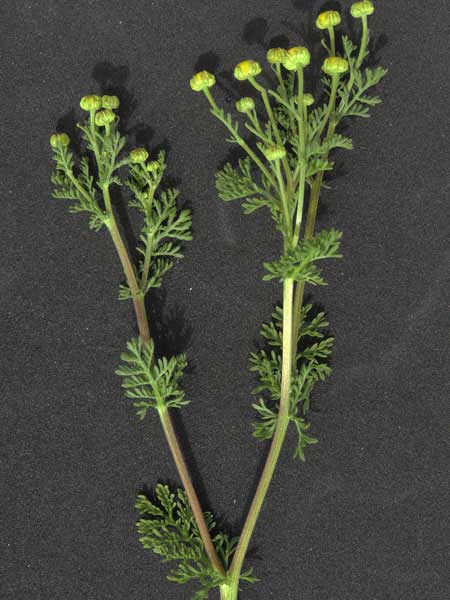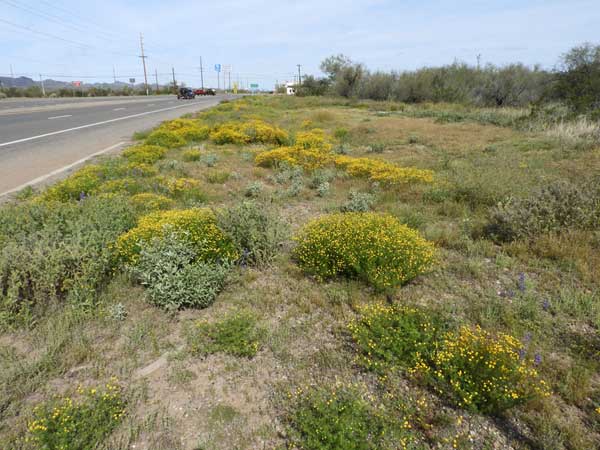Stinknet
Oncosiphon piluliferum

On a terrace along Cave Creek, Phoenix, Maricopa Co., Arizona, USA. Feb. 2017. The florets on this example have not fully opened.
LEAVES: Leaves twice finely dissected resembling the leaves of carrot. Crushing them produces a strong, unpleasant
odor; from this the common name arises.
FLOWERS: Numerous small flower heads appear like bright yellow half-spheres. These are densely
spaced and very small disc florets. There are no ray florets.
ANNUAL: Herbaceous weed of disturbed ground. Plants may grow to over
a half meter in height.
RANGE: This is an exotic, invasive weed from southern Africa that has been increasing in abundance especially in disturbed
habitats such as agricultural areas and desert riparian washes.
UNARMED.
FRUIT: Many, many minute seeds develop within each head.
Now three years later (2020) this weed has rapidly exploded in range and coverage in the Sonoran Desert. It has now become widely distributed well into mostly undisturbed Upland Sonoran Desert. Vacant lots and road sides are carpeted with the intense yellow flowers. Each small head produces many dozen seeds.

This roadside near Sun City West along US-60 has close to 50% coverage by stinknet. 22 March 2020.